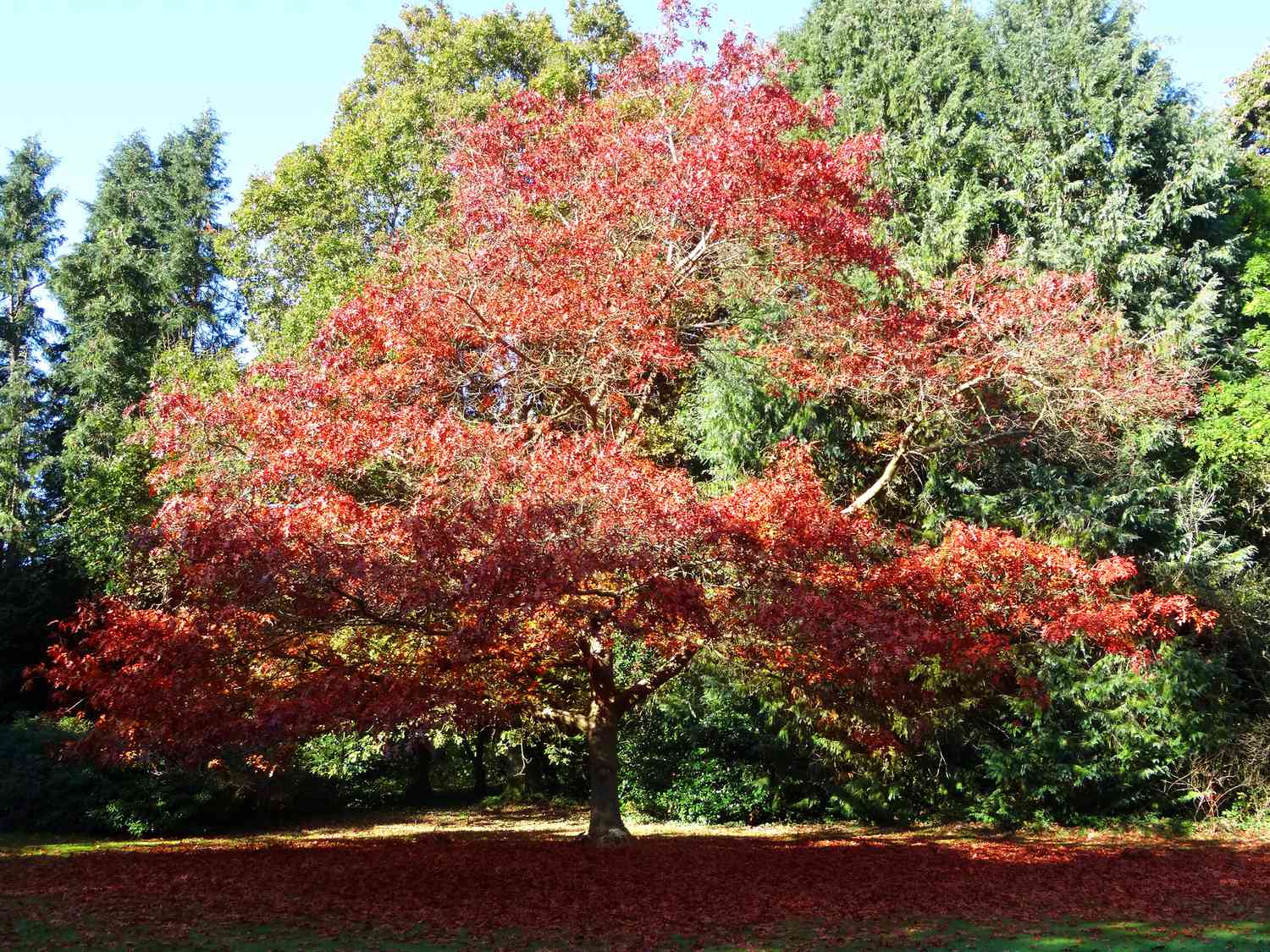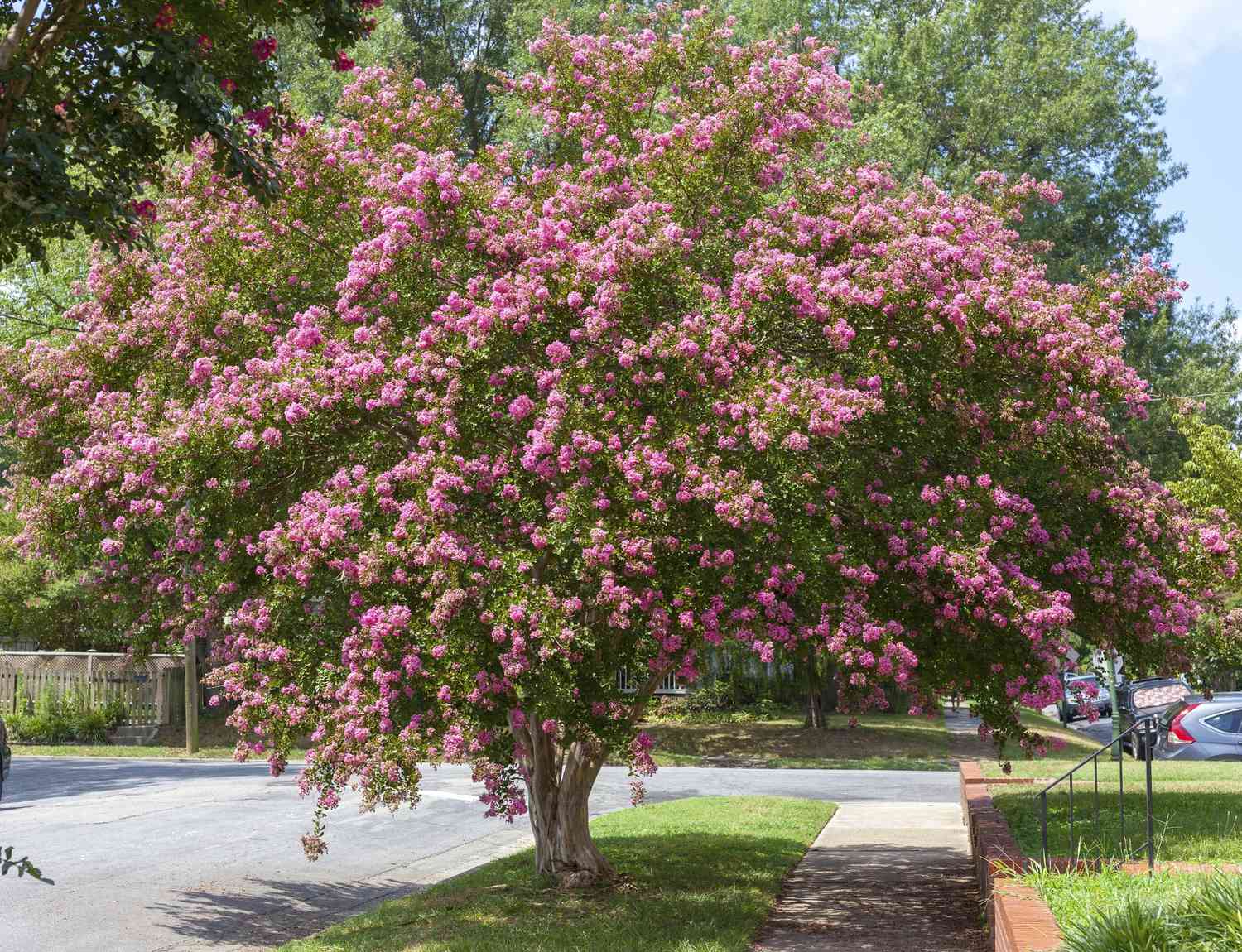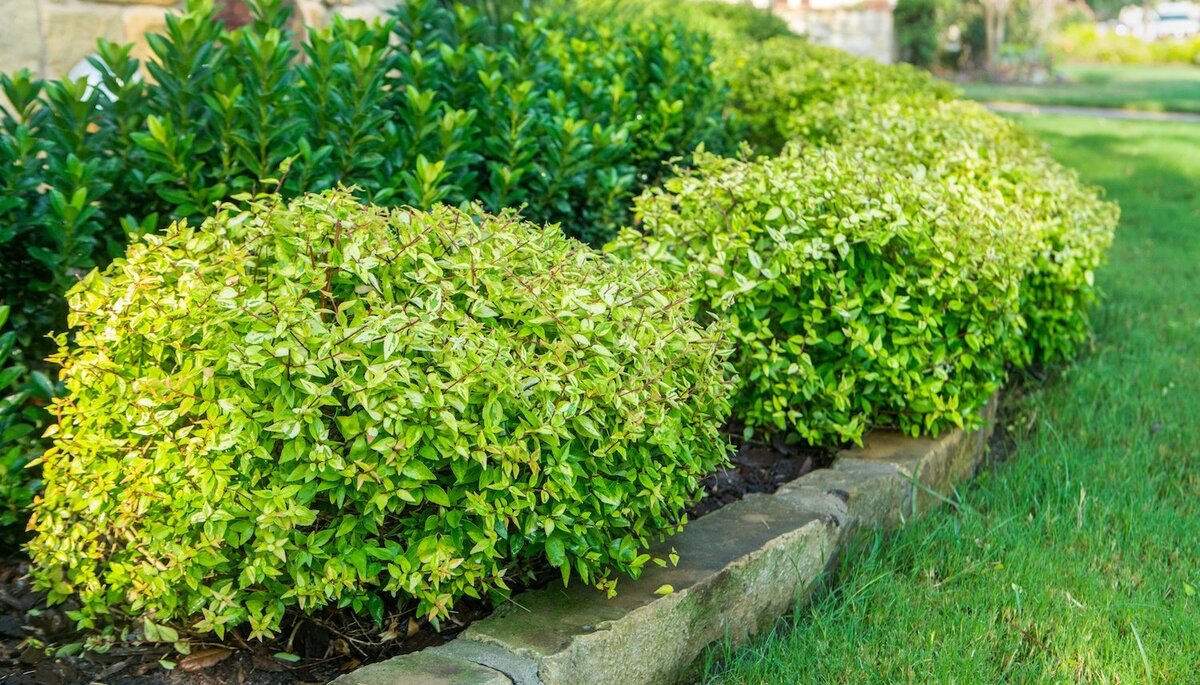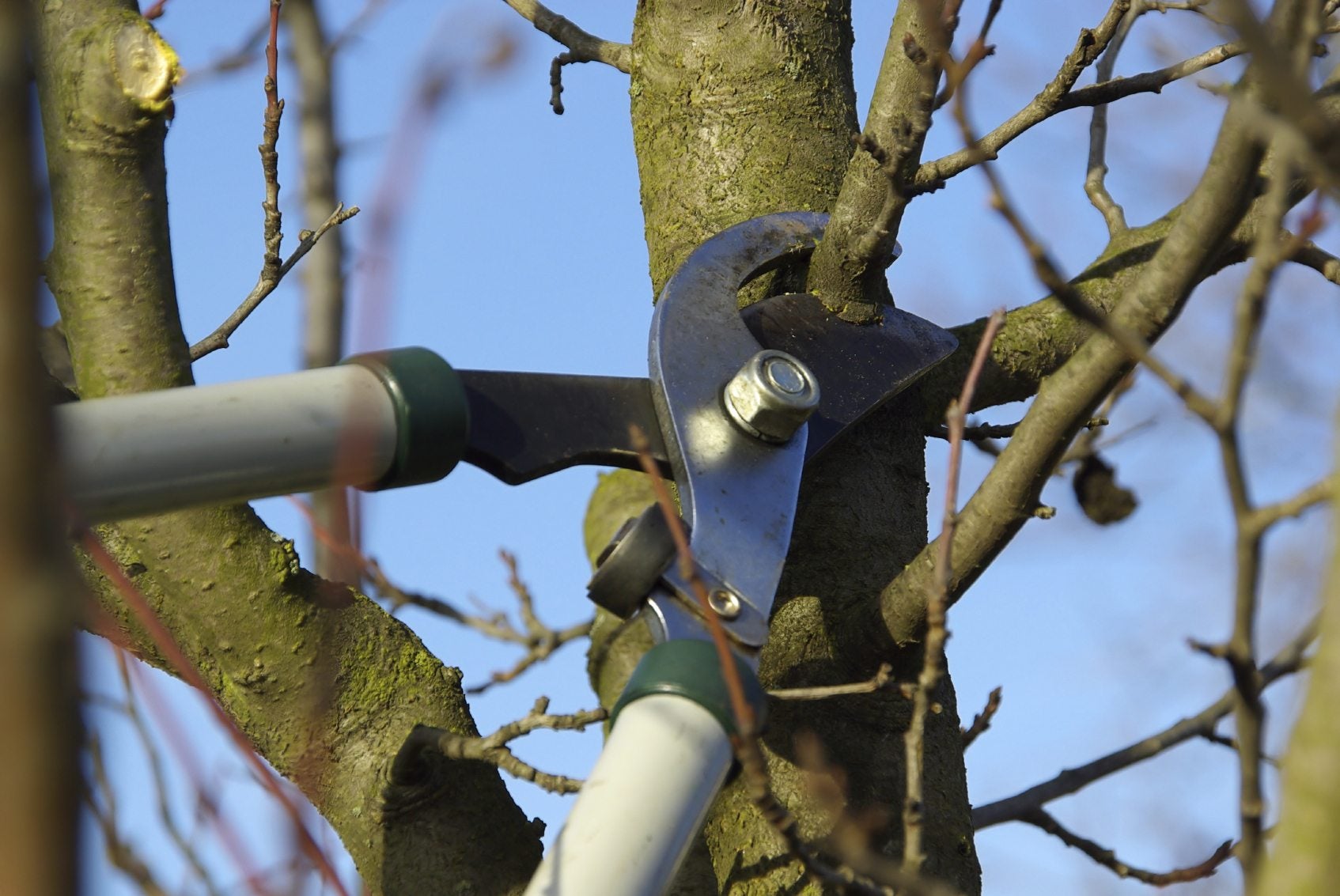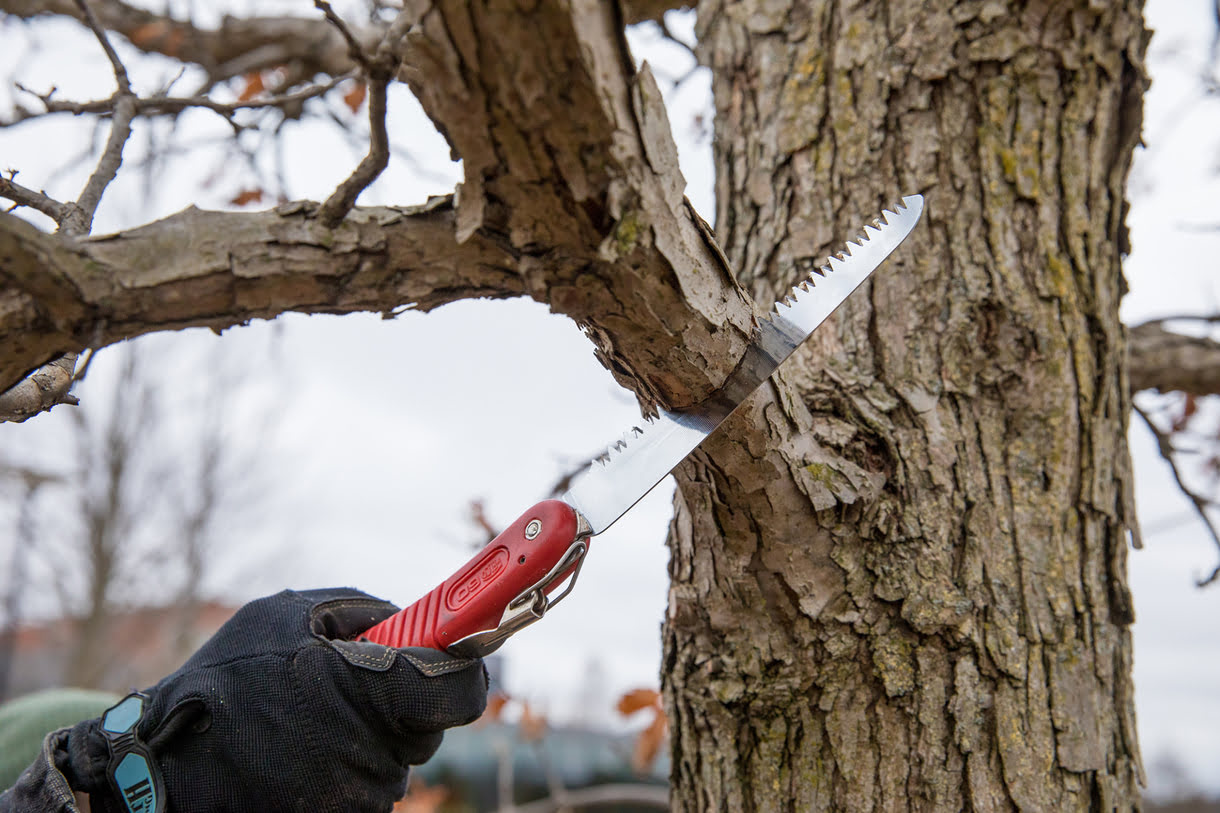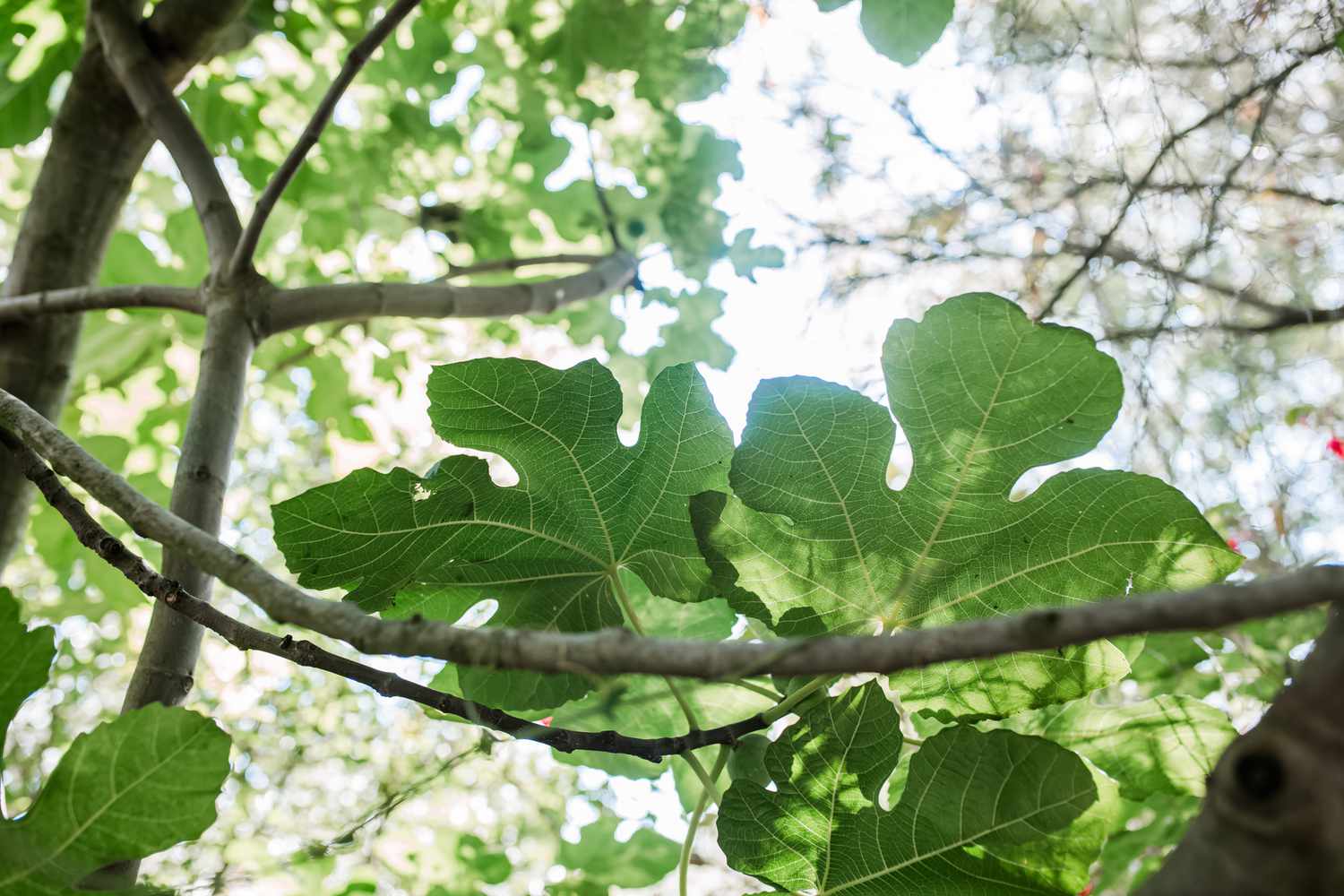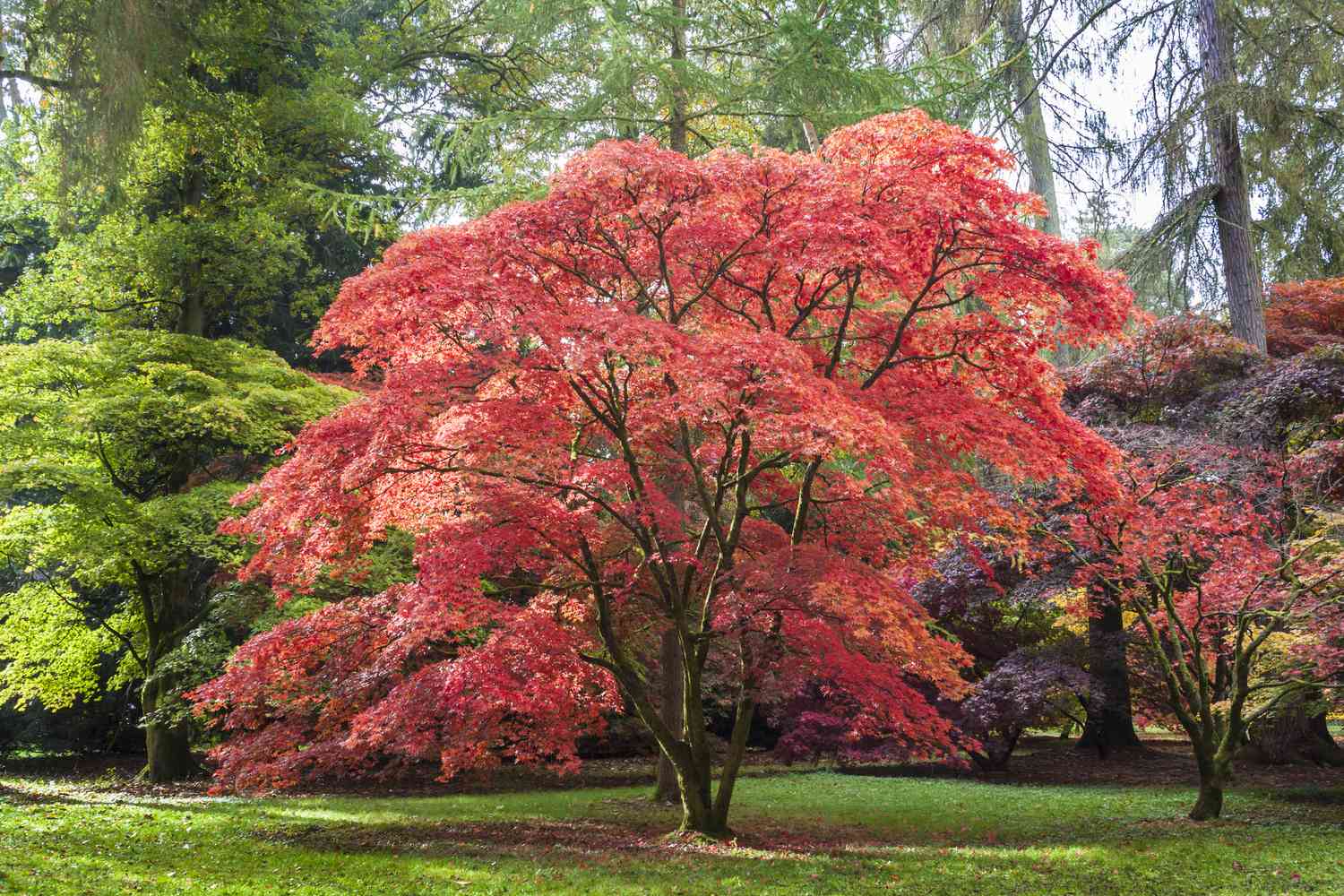Home>Gardening Techniques>Plant Care>When To Prune Oak Trees In Texas
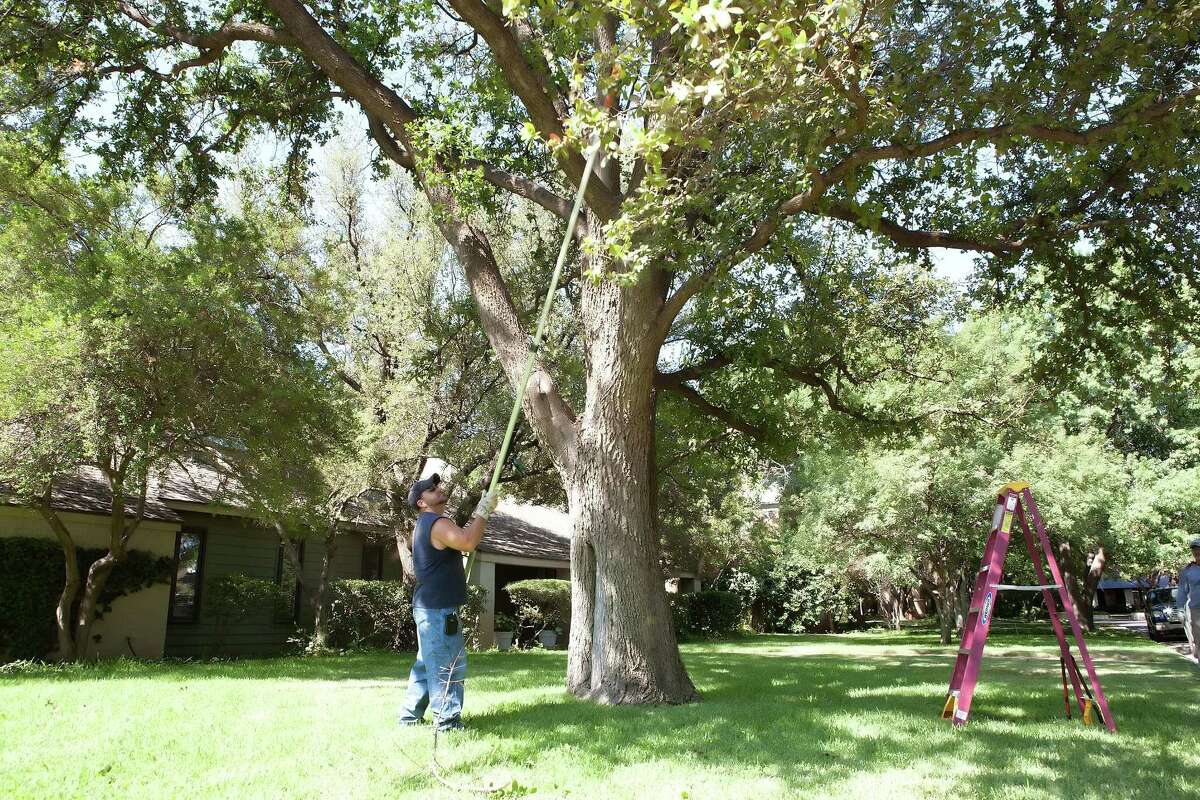

Plant Care
When To Prune Oak Trees In Texas
Modified: January 22, 2024
Learn the best time to prune oak trees in Texas and ensure healthy growth with proper plant care techniques.
(Many of the links in this article redirect to a specific reviewed product. Your purchase of these products through affiliate links helps to generate commission for Chicagolandgardening.com, at no extra cost. Learn more)
Table of Contents
Introduction
Welcome to the world of plant care, specifically focused on the beautiful and majestic oak trees of Texas. Oak trees are not only iconic symbols of strength and endurance but are also vital contributors to our environment. As an SEO expert with deep plant care knowledge, I am excited to share with you the importance of pruning oak trees and guide you through the best practices for achieving healthy and vibrant trees.
Pruning is a critical aspect of plant care as it helps maintain the overall health, structure, and aesthetics of oak trees. By selectively removing certain branches, pruning promotes better airflow and sunlight penetration, reducing the risk of diseases and improving the tree’s growth. Proper pruning can also enhance the form and shape of the tree, making it more visually appealing.
However, pruning should not be approached haphazardly. It requires careful consideration of various factors to ensure the best results for your oak trees. Factors such as the tree’s age, condition, and the specific goals of pruning must be taken into account. Additionally, understanding the optimal timing for pruning is crucial, as it can have a significant impact on the tree’s health and future growth.
In this comprehensive guide, we will explore the best practices for pruning oak trees in Texas, including the ideal time for pruning, the tools and techniques required, as well as essential tips and guidelines to help you achieve successful results. But before we dive into the specifics, let’s take a closer look at oak trees in Texas and why pruning is so crucial for their overall well-being.
Understanding Oak Trees in Texas
Oak trees are a common sight in the diverse landscapes of Texas. With their strong, sturdy trunks and sprawling branches, they add beauty and grandeur to both urban and rural areas. Texas is home to several species of oak trees, including the famous live oak, post oak, and red oak. Each species has its own unique characteristics and requirements, but they all share certain fundamental traits.
One of the most remarkable features of oak trees is their longevity. These trees have the potential to live for hundreds of years, with some specimens in Texas dating back to the time of the American Revolution. Their sturdy structures and deep root systems make them highly resilient and able to withstand harsh weather conditions, which is particularly important in the unpredictable Texas climate.
Aside from their aesthetic value, oak trees play a crucial role in the ecosystem. They provide shade, shelter, and food for a wide variety of wildlife, including birds, squirrels, and insects. The acorns produced by oak trees serve as an important source of nutrition for many animals, contributing to the overall health and balance of the local ecosystem.
Understanding the specific needs and characteristics of oak trees is essential when it comes to their care and maintenance. Whether you have oak trees on your property or simply appreciate their beauty in the natural surroundings, having a basic knowledge of their biology and growth patterns will help you make informed decisions when it comes to their well-being.
It’s important to note that oak trees have a distinct growth habit characterized by a dominant central leader and well-spaced lateral branches. As they mature, oak trees develop an expansive canopy that provides ample shade. However, this growth pattern can sometimes lead to structural issues, such as weak branch unions or overcrowding of branches.
Properly understanding the growth habits and needs of oak trees in Texas will enable you to provide the care they require, including appropriate pruning techniques. In the next sections, we’ll delve into the importance of pruning and the factors to consider before undertaking this important task for your oak trees.
Why Pruning is Important
Pruning plays a vital role in the overall health and well-being of oak trees. It involves the selective removal of branches to improve the structure, appearance, and longevity of the tree. While it may seem counterintuitive to remove parts of a tree, pruning is a crucial practice that offers numerous benefits.
One of the primary reasons for pruning oak trees is to promote better airflow and sunlight penetration throughout the canopy. Over time, oak trees can develop dense foliage, which restricts the circulation of air and sunlight. By removing certain branches, pruning helps create open spaces within the canopy, allowing sunlight to reach the lower branches and the ground below. This promotes better photosynthesis, which is crucial for the tree’s growth and overall health.
Additionally, improved airflow through proper pruning helps prevent the development and spread of fungal diseases. Dense foliage can create a humid environment that favors the growth of fungi and the onset of diseases such as oak wilt. Pruning allows for better air circulation, reducing the chances of fungal infections and ensuring the longevity of your oak trees.
Pruning also helps shape the tree and maintain its structural integrity. Over time, oak trees can develop weak or crossing branches, which can pose a risk of breakage, especially during storms or high winds. By selectively removing these branches through pruning, you can ensure that the tree maintains a sturdy and stable structure, reducing the risk of damage to both the tree and surrounding property.
Furthermore, pruning is essential for maintaining the aesthetics of oak trees. By selectively removing branches, you can create a well-balanced and visually pleasing shape for your tree. Pruning can also enhance the overall form of the tree, making it more symmetrical and attractive. This is especially important for oak trees in urban or landscaped areas, where visual appeal is a key consideration.
Another critical reason for pruning oak trees is to manage their size. While oak trees are known for their grandeur and expansive canopies, they can sometimes outgrow their designated space. Pruning allows you to control the size of the tree by removing excessive growth and creating a more manageable shape. This can prevent overcrowding and potential damage to nearby structures or other plants.
In summary, pruning oak trees is essential for promoting proper airflow, preventing diseases, maintaining structural integrity, enhancing aesthetics, and managing size. By investing time and effort into regular pruning, you can ensure the long-term health and vitality of your oak trees in Texas.
Factors to Consider Before Pruning
Before you begin pruning your oak trees in Texas, it is important to consider several factors to ensure that you approach the task correctly and effectively. Taking these factors into account will help you make informed decisions and achieve the desired results for your trees.
1. Tree Health: Assess the overall health of your oak tree before pruning. If the tree is diseased, stressed, or weakened, it may not be suitable for pruning at that time. Pruning a tree when it is in a weakened state can further damage its health and jeopardize its recovery. It is best to consult with an arborist if you have concerns about the health of your oak tree.
2. Tree Age: Consider the age of your oak tree when planning pruning activities. Younger trees generally require less pruning, as their branches are still developing and their natural shape is forming. Older trees may require more extensive pruning to maintain their structure and promote their health. Understanding the growth patterns and habits of different oak tree species will help you determine the appropriate pruning approach.
3. Pruning Goals: Determine your specific pruning goals before starting. Are you looking to improve the tree’s appearance, remove dead or diseased branches, or manage its size? Having a clear objective will guide your pruning decisions and ensure that you achieve the desired outcome. Consult with an arborist or tree care specialist if you need assistance in setting pruning goals.
4. Tree Dormancy: Consider the dormancy period of your oak tree before pruning. In general, it is best to prune oak trees during their dormant season, which is typically in late winter or early spring. Pruning during dormancy minimizes the stress on the tree and reduces the risk of pest infestations and diseases. Pruning during active growth periods should be avoided, as it may affect the tree’s energy reserves and growth.
5. Local Regulations: Familiarize yourself with any local regulations or restrictions on pruning oak trees in your area. Some regions may have specific guidelines or permits required for pruning large or mature trees. It is important to comply with these regulations to avoid any legal issues and ensure the proper care of your oak trees.
6. Professional Assistance: If you are unsure or inexperienced in pruning oak trees, it is always recommended to seek professional assistance. Consulting with an arborist or tree care specialist can provide valuable guidance and ensure that the pruning is done correctly and safely. They can assess the tree’s specific needs, recommend the appropriate pruning techniques, and help you achieve the best results.
By considering these factors before pruning, you can ensure that your approach is well-informed and aligned with the specific requirements of each oak tree. Proper planning and preparation will contribute to the success and long-term health of your trees.
Best Time for Pruning Oak Trees in Texas
The timing of pruning oak trees in Texas is crucial to ensure their health and vitality. While oak trees can be pruned at various times throughout the year, there are certain periods that are considered ideal for achieving the best results.
The most recommended time for pruning oak trees in Texas is during their dormant season, which typically occurs in late winter to early spring. Pruning during this period offers several advantages. First, the tree is in a state of rest, which reduces the stress on the tree and minimizes the risk of disease transmission. Second, the absence of leaves allows for better visibility of the tree’s structure, making it easier to assess and selectively remove branches.
Pruning during the dormant season promotes better health for oak trees. The wounds created by pruning are less likely to be infected by pathogens, as the tree’s natural defense mechanisms are more active during this period. Additionally, pruning during the dormant season does not interfere with the tree’s growth and energy allocation, as it occurs before the vigorous growth phase in spring.
While late winter to early spring is the general recommendation, it’s important to note that some oak tree species may have specific timing preferences. For example, the live oak (Quercus virginiana), a commonly found oak tree in Texas, is more sensitive to pruning during the coldest parts of winter and may benefit from pruning in late winter or early spring just before the onset of new growth. On the other hand, other oak species, such as the red oak (Quercus rubra) or post oak (Quercus stellata), can tolerate pruning later in spring.
It’s worth mentioning that there are certain situations where pruning may be necessary outside of the dormant season. For instance, if an oak tree has overhanging branches that pose a safety hazard or if dead or diseased branches need immediate removal, the pruning can be done as needed. However, caution should be exercised to minimize stress on the tree and ensure proper wound care.
It is important to consult with a professional arborist or tree care specialist to determine the specific timing requirements for pruning your oak trees. Their expertise will help you identify the appropriate time to prune based on the species, age, and condition of your trees.
In summary, the best time to prune oak trees in Texas is during the dormant season, which is typically late winter to early spring. Pruning during this period allows for better wound healing and reduces the risk of diseases or infections. However, each oak tree species may have its own specific preferences and requirements, so it is wise to consult with professionals to ensure the best timing for pruning your specific oak trees.
Tools and Techniques for Pruning
When it comes to pruning oak trees in Texas, having the right tools and employing the proper techniques is essential for achieving the best results. Here are some commonly used tools and techniques for pruning oak trees:
1. Pruning Tools: To effectively prune oak trees, it is important to have the following tools:
- Pruning Shears: Also known as hand pruners or secateurs, these are used for cutting small branches with a diameter of up to ¾ inch.
- Lopper: A lopper is a larger version of pruning shears and is used to cut branches with a diameter between ¾ inch to 1 ½ inches.
- Pole Pruner: A pole pruner consists of a long pole with a pruning saw or pruning shears attached to the end. It is used to reach and cut higher branches without the need for a ladder.
- Pruning Saw: A pruning saw is designed to cut larger branches with a diameter of more than 1 ½ inches. It has a curved blade for easier cutting.
- Chainsaw: For larger branches or extensive pruning, a chainsaw may be necessary. It is an effective tool for cutting through thick branches quickly.
- Protective Gear: Don’t forget to wear safety goggles, gloves, and a sturdy pair of boots to protect yourself while pruning.
2. Pruning Techniques: Proper pruning techniques are crucial to ensure the health and structural integrity of oak trees. Here are some important techniques to keep in mind:
- Thinning: Thinning involves selectively removing branches to improve air circulation and sunlight penetration within the canopy. It is recommended to remove no more than 25% of the tree’s live canopy during a pruning session.
- Heading: Heading is the removal of the tip of a branch to promote branching and denser growth. This technique is often used to manage the size and shape of oak trees.
- Proper Cuts: Make clean and precise cuts just outside the branch collar, which is the swollen area at the base of the branch. Avoid leaving stubs or cutting too close to the main branch or trunk, as this can impede proper healing.
- Wound Care: Oak trees are susceptible to oak wilt, a fungal disease that can enter through pruning wounds. To prevent infection, apply a pruning sealant to large cuts immediately after pruning.
- Branch Placement: Consider the natural growth habit of the tree and the desired shape when selecting branches for removal. Aim for well-spaced, structurally sound branches that have a strong attachment to the main trunk or a larger branch.
Remember, it is important to have a good understanding of the specific needs and growth patterns of your oak trees before pruning. Consider seeking the help of a professional arborist or tree care specialist if you are unsure about the proper techniques or need assistance with larger or more complex pruning tasks.
By using the right tools and employing the correct pruning techniques, you can effectively care for and maintain the health and beauty of your oak trees in Texas.
Pruning Tips and Guidelines
Pruning oak trees in Texas requires careful planning and execution to ensure the health and longevity of the trees. Here are some essential tips and guidelines to follow when pruning your oak trees:
1. Know the Species: Familiarize yourself with the specific oak tree species you are pruning. Different species may have different growth habits and pruning requirements. Understanding these differences will help you make informed decisions when it comes to pruning techniques and timing.
2. Prune for Structure: Focus on maintaining the natural structure and form of the tree. Avoid excessive pruning that removes too many live branches, as this can weaken the tree and make it more susceptible to diseases and pests.
3. Remove Dead and Diseased Branches: Pruning should primarily involve the removal of dead, diseased, or damaged branches. These branches not only detract from the aesthetics of the tree but can also pose safety hazards and serve as entry points for pathogens.
4. Prune When Dry: It is best to prune oak trees when the weather is dry. Wet conditions can increase the spread of diseases, and moisture on the branches can make them more prone to damage from pruning cuts.
5. Avoid Over-Pruning: While pruning is beneficial, excessive pruning can be harmful to oak trees. Never remove more than 25% of the live canopy in a single pruning session. Over-pruning can stress the tree, weaken its structure, and impact its overall health.
6. Prune Branches at the Branch Collar: To minimize the risk of disease transmission and promote proper healing, make clean cuts just outside the branch collar. The branch collar is the swollen area at the base of a branch where it meets the trunk or larger branch. Avoid leaving stubs or cutting too close to the branch collar.
7. Avoid Topping: Topping, the practice of indiscriminately removing the tops of trees, is highly discouraged for oak trees. Topping can lead to weak regrowth, increased vulnerability to diseases, and negatively impact the tree’s longevity.
8. Monitor for Oak Wilt: Oak wilt is a devastating fungal disease that affects oak trees in Texas. Take precautions to prevent the spread of oak wilt by sterilizing pruning tools between cuts and avoiding pruning during the high-risk periods when oak wilt can be easily transmitted.
9. Consult Professionals: When in doubt, it’s always best to consult with a professional arborist or tree care specialist. They can provide expert guidance, assess your oak trees’ specific needs, and ensure that pruning is done correctly and in accordance with industry standards.
By following these tips and guidelines, you can maintain the health, structure, and beauty of your oak trees while reducing the risks associated with improper pruning techniques. Remember, regular and proper pruning will contribute to the long-term health and vitality of your oak trees in Texas.
Potential Risks and Precautions
Although pruning is an essential part of oak tree care, it is important to be aware of the potential risks involved and take necessary precautions to minimize them. Here are some common risks associated with pruning oak trees in Texas and precautions to consider:
1. Oak Wilt: Oak wilt is a serious fungal disease that affects oak trees in Texas. Pruning during the high-risk periods, when the disease is easily transmitted, can increase the chances of infection. To prevent the spread of oak wilt, avoid pruning during the spring and early summer months when sap-feeding beetles are active. Additionally, sterilize pruning tools between cuts to minimize the risk of spreading the disease.
2. Personal Safety: Safety should always be a priority when pruning oak trees. Always wear appropriate protective gear, including safety goggles, gloves, and boots, to protect yourself from falling debris and potential injuries. Use caution when working with ladders or climbing equipment, ensuring that they are stable and secure.
3. Electrical Hazards: Before pruning near power lines, contact your local utility company to ensure that it is safe to do so. Pruning near power lines can be extremely dangerous and should be left to professionals who are trained and equipped to handle such situations.
4. Structural Integrity: Improper pruning techniques can weaken the structure of oak trees, making them more vulnerable to storm damage. Avoid topping or removing a significant portion of the crown, as this can result in weak regrowth and compromise the tree’s stability. Follow proper pruning guidelines and consult with a professional when necessary to maintain the structural integrity of the tree.
5. Tree Stress: Pruning, when done properly, can be beneficial for oak trees. However, excessive or poorly timed pruning can cause unnecessary stress to the tree. Avoid over-pruning and follow the recommended pruning guidelines to minimize stress and promote healthy regrowth.
6. Unqualified Pruning: Improper pruning techniques can have long-lasting negative effects on oak trees. It is important to have a good understanding of proper pruning methods and, when in doubt, seek the expertise of a certified arborist or tree care specialist. They can provide guidance and ensure that pruning is done correctly, considering the specific needs and requirements of your oak trees.
By being aware of these potential risks and implementing necessary precautions, you can safely and effectively prune your oak trees while minimizing potential damage and promoting their long-term health.
Conclusion
Pruning oak trees in Texas is a crucial aspect of plant care that contributes to their health, vitality, and overall beauty. By selectively removing branches, pruning improves airflow, sunlight penetration, and structural integrity while preventing diseases and managing the size of the tree. However, it is important to approach pruning with care and consideration.
Before pruning, it is essential to understand the specific needs and characteristics of oak trees in Texas. Factors such as tree health, age, and pruning goals must be taken into account. Additionally, knowing the best time for pruning and having the right tools and techniques is crucial for achieving successful results.
Throughout the pruning process, it is important to follow guidelines and take necessary precautions. This includes wearing protective gear, avoiding over-pruning, and being aware of potential risks such as oak wilt, personal safety hazards, and damage to the tree’s structural integrity. Consulting with professionals and seeking their assistance can provide invaluable guidance and ensure that pruning is done correctly.
By implementing proper pruning practices and considering the specific needs of your oak trees, you can promote their health, beauty, and longevity. Regular pruning will not only enhance the aesthetics of your oak trees but also contribute to the well-being of the local ecosystem and provide a safe and enjoyable environment for many years to come.
